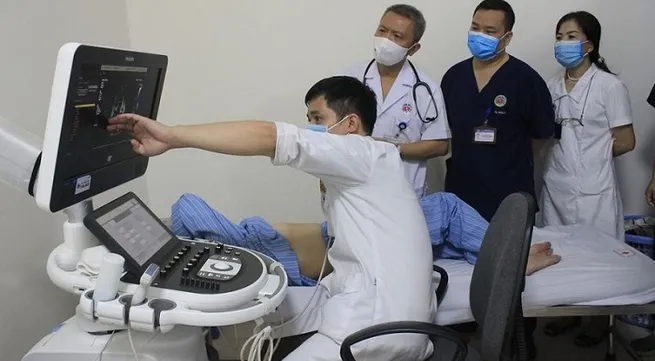First patient in Vietnam to have degenerative artificial heart valve replaced

The first operation of its kind in Vietnam was successfully performed by doctors from the Hanoi-based E Hospital recently.
It is the first case in Vietnam to apply technological advances in the cardiovascular industry to replace a degenerated artificial heart valve with the least invasive method and without having to re-operate.
The surgery was conducted by a team of doctors from the Heart Centre in Hospital E, headed by Professor, Dr. Le Ngoc Thanh – the hospital director, in coordination with a team from Vinmec Hospital in Ho Chi Minh City, led by Professor, Dr. Vo Thanh Nhan – the former head of the Cardiology Department in Cho Ray Hospital.
The 80-year-old female patient underwent surgery by Professor, Dr. Le Ngoc Thanh 17 years ago to replace her heart valve at Viet Duc Hospital. She had underlying hypertension and coronary artery stenosis that had been stented before.
The patient was diagnosed with the degenerated artificial heart valve that needed replacing after showing difficulty in breathing and tiredness.
“With her status as elderly person, with complicated co-morbidities, the current re-operation had several potential risks for the patient. We consulted with the team and decided to replace the heart valve through catheters,” Prof. Thanh said regarding the difficulties in the replacement.
On July 19, the patient received an intervention to replace her artificial heart valve. A system of equipment carrying a small valve, only 5-6mm in diameter, compressing an internal biological artificial heart valve, was carried along the peripheral blood vessels from the femoral artery, through the abdominal aorta to the inner aorta in the chest and to the location of the broken artificial heart valve.
A balloon system expanded the old degenerated artificial valve, then the device released the newly compressed artificial heart valve into the correct position. Doctors simply needed to poke a fine needle into the femoral artery, extend it by a few millimetres and put the device in the form of wires and pipes into the blood vessel and up into the heart.
The operation was performed under the positioning screen of a modern digital blood vessel scanner system. With the designated specifications, the newly opened artificial heart valve firmly adhered to the surrounding structures, repeating physiological blood flow and ensuring the blood supply of the patient.
The total time to perform the surgery for the patient, including the preparation of the necessary equipment, was less than two hours. The patient was awake immediately after the valve was replaced and she was discharged a few days later.
Her echocardiography re-examination on August 27 showed that the new heart valve was working well, helping to improve immediately her clinical symptoms.
The valve-in-valve transcatheter aortic valve implantation (ViV-TAVI) applies a range of technological advances from the interventional cardiology industry. It is one of the preferred options suitable for many elderly patients who have had a biological aortic valve replacement and now need that to be replaced, while helping to avoid having to perform prolonged surgery with significant potential risks for their health.
Tags:





